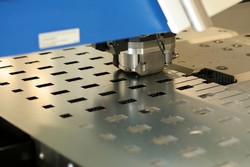Superior 3D microforming
Metal forming, essentially a form of sheet-metal stamping, is a generally efficient way of manufacturing large parts. However, for 3D microparts, the process requires many additional and wasteful steps, which must be eliminated if Europe is to maintain its competitiveness. The EU-funded HIPR (High-precision micro-forming of complex 3D parts) project demonstrated the feasibility of an efficient new microforming process. The new method was shown to achieve the highest quality standards, while lowering costs and environmental impact, yet increasing productivity. Work focused on three main areas. To increase tool lifetime, the team examined tool materials, including hard metals and ceramics. Researchers also examined new coatings and surface modification techniques. At the same time, the group reconsidered toolmaking strategies, so as to enable the necessary micro-features. The study investigated technologies such as ultra-precision grinding and laser ablation, which were shown to achieve the desired results. New methods included in-line measurement of 3D shapes and material properties. Measurements also covered tool force and temperature, which helped determine when to stop production because a tool had reached the end of its life. The outcome was 100 % quality control. Process modelling, to predict the process, involved implementation of a tool wear and fracture model able to be integrated into conventional finite element method (FEM) modelling software. To do so, the team modelled selected tool materials, examined implementation in terms of FEM code and predicted selected microforming processes. Exploitable results include a 15 tonne press micro-manufacturing pilot line, a sensorised stamping tool, an in-line measurement system and a tool lifetime prediction model. For each, the group devised a marketing plan, including risks and contingencies. The HIPR project's new tools and tool management systems increase productivity and achieve a higher overall quality. The outcomes help European industrial capability and competitiveness.
Keywords
Microforming, stamped-metal, tool materials, metal forming, manufacturing, HIPR, 3D parts



